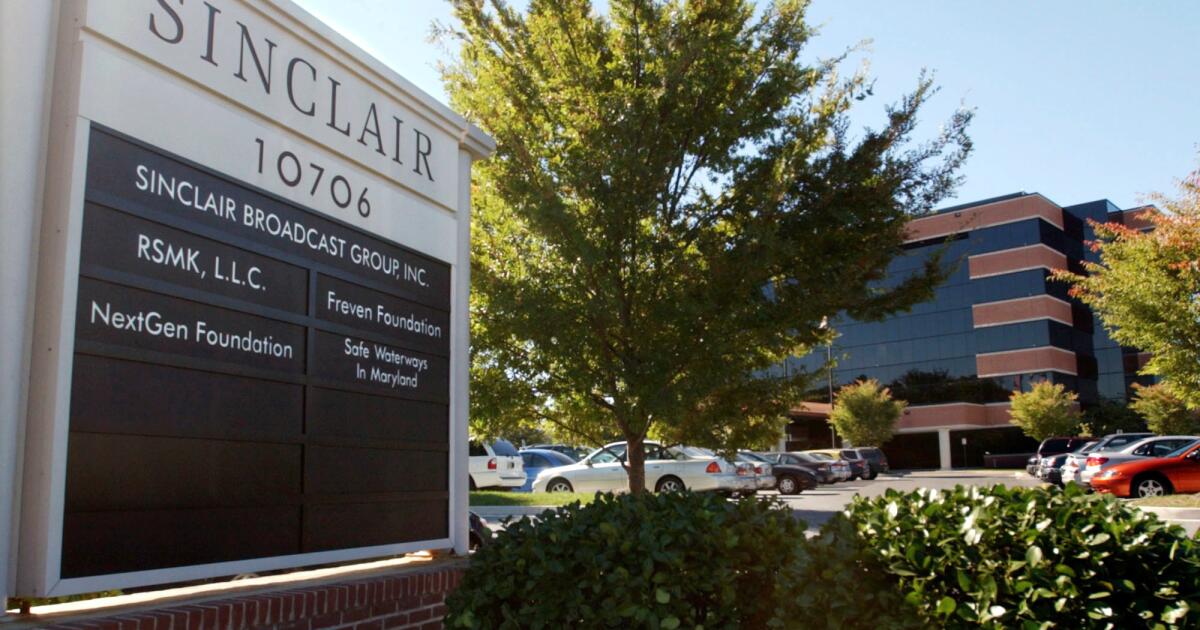Sinclair Broadcast Group makes bid for Scripps TV stations
Sinclair Broadcast Group has made an unsolicited bid to buy rival station owner E.W. Scripps just a week after disclosing it had acquired shares of the company’s stock.
Sinclair filed a statement Monday with the Securities and Exchange Commission saying it will offer Scripps $7 per share, consisting of $2.72 in cash and $4.28 in combined company common stock. The price is a 200% premium over the 30-day average for Scripps shares as of Nov. 6.
Sinclair revealed on Nov. 17 that it gained a stake in Scripps through the acquisition of publicly traded shares. Scripps, which operates 61 TV stations and owns the ION network, is valued at around $393 million.
The Cincinnati-based Scripps said in a statement saying the company’s board of directors “will carefully review and evaluate any proposals, including the unsolicited Sinclair offer.”
The statement added that the board will “act in the business interest of the company, all of its shareholders as well as its employees and the many communities it serves across the United States.”
The company’s stock was up around 7.5% on the news of the Sinclair offer, closing at $4.43 a share Monday afternoon.
A takeover of Scripps would be culturally jarring for the local newsrooms at its stations. The company was founded in 1878 with a chain of daily newspapers that defined itself through journalistic independence. The company’s longtime motto is “Give light.”
The Baltimore-area Sinclair is known for the conservative politics of its owners, led by David D. Smith, who have had their views amplified through the company’s local TV news coverage over the years.
Sinclair most recently tried to flex its muscle when it pulled “Jimmy Kimmel Live!” off its ABC-affiliated stations in September after the late-night host made comments about the political affiliation of the man accused of killing right-wing political activist Charlie Kirk.
Sinclair demanded that Kimmel make “a meaningful donation” to Kirk’s organization Turning Point USA in addition to an apology. None was offered, and after a week, Sinclair put the program back on its air with zero concessions from ABC.
Regardless of political leanings, all major TV station ownership groups have urged the Federal Communications Commission to lift the limit on how much of the country their outlets can cover.
TV station owners are limited to reaching 39% of the country, which companies say puts them at a disadvantage in competing against tech giants that have no such restriction in their media endeavors.
While consumer advocates believe consolidation will reduce the diversity of voices in communities, TV executives have argued that it’s no longer economically viable to have multiple station owners in a single market, often covering the same major stories.
Consolidation would also give TV station owners more clout in their negotiations for carriage fees they receive from cable and satellite providers. Such fees are vital as TV stations have struggled to maintain ad revenues due to a decline in ratings and more consumers turning to streaming video platforms.
Sinclair’s attempt to buy Scripps comes after its failed effort to acquire Tegna Inc., which agreed to a $6.2-billion deal to merge with Nexstar Media Group. The deal will require regulatory approval as it would give Nexstar’s stations the ability to reach 80% of the U.S.
Station owners calling for consolidation have been hopeful they had an ally in Trump-appointed FCC Chairman Brendan Carr.
But a social media post suggested that President Trump may be wary of consolidation, saying it could give greater influence to broadcast networks NBC and ABC. The president has been highly critical of the news coverage of both networks, even threatening to go after their TV station licenses.

